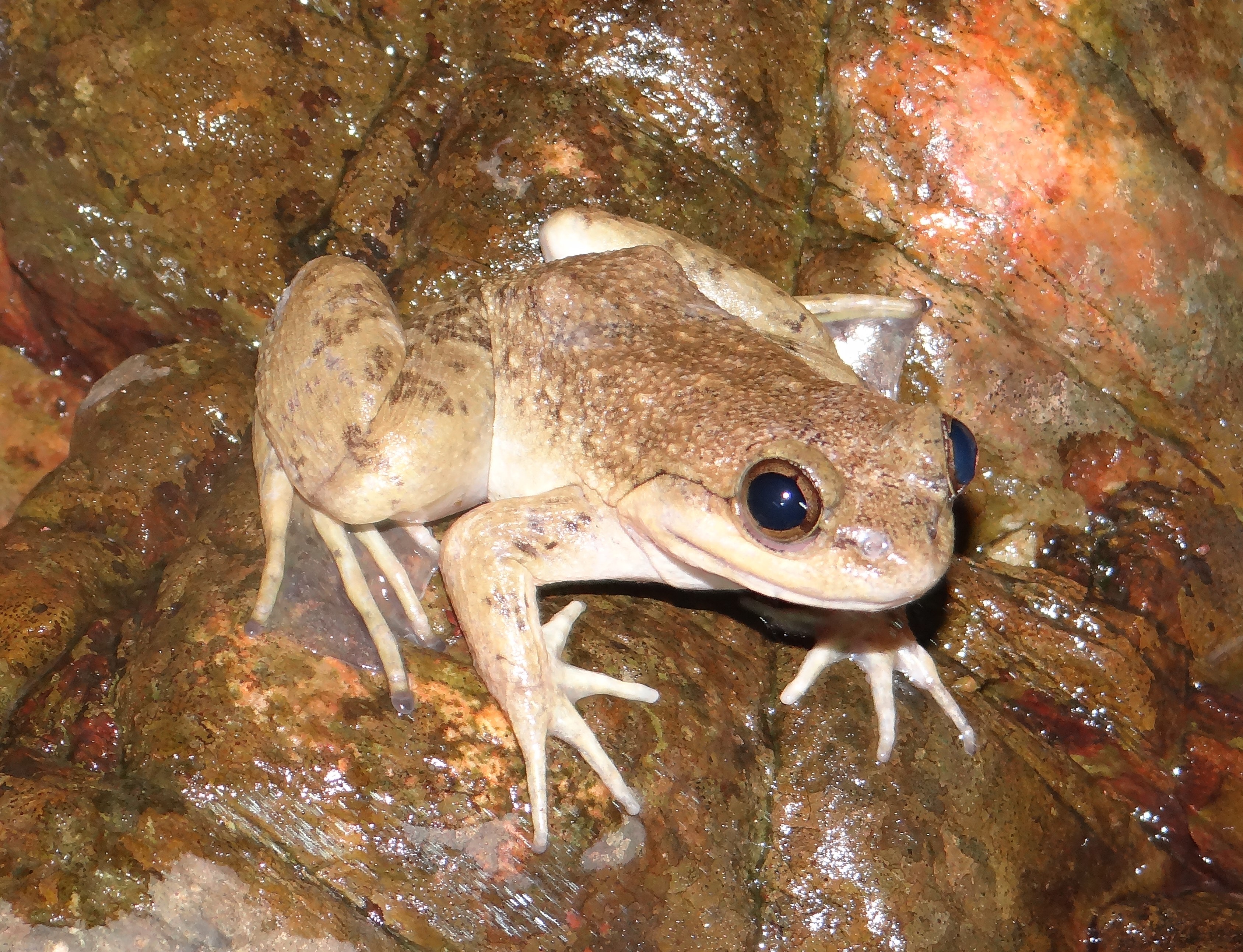The Togolese Society for Nature Conservation (NGO AGBO-ZEGUE) organizes annual work on the various components of Togolese biodiversity, including amphibians. During the last rainy season, we have carried out field works in the Fazao – Malfakassa National Park (the most important protected area of Togo in terms of its biodiversity and size: 292,000 hectares): the Missahohoe classified forest and the Kovié community forest.
The last activity took place in August 2019 and the data was collected by a team consisting of Dr. Gabriel Hoinsoudé Segniagbeto, two students (Kafui Jeanne Dekawole and Delagnon Assou) and a field assistant guide.
Several sites in the Fazao-Malfakassa National Park were randomly visited, during the day for the observation of litter frogs, and at night for nocturnal species. At Missahohoe (1,400 ha) and Kovié (11,269 ha), two visits were made for ecological population monitoring of the Togo Slippery Frog (Conraua derooi) and the West African Brown Frog (Aubria subsigillata). During these fieldwork activities, some specimens were collected for identification and further research activities. Moreover, data on hunting activities was gathered and sensitization of local communities were carried out.
We found that the populations of Togo Slippery Frog at the Missahohe and Yikpa sites are relatively stable. They remain highly fragmented in small surface units along the torrents. As for the West African Brown Frog population, contrary to previous years, we were not able to find any individuals. However, their presence has been reported by local frog hunters who have been made aware of their presence. We assume that the population of this species in Togo is highly endangered.
The frog specimens encountered in the Fazao-Malfakassa National Park are those reported in the literature. However, there is an abundance of individuals of the following species: Arthroleptis poecilonotus, Leptopelis spiritusnoctis, Hyperolius spp compared to individuals of Phrynobatrachus spp, Ptychadena spp and others. These findings could be due to the period of the surveys, bush fires and other factors that need to be explored for a better understanding of the dynamics of amphibian populations in the Park.
By Kafui Jeanne DEKAWOLE, Délag-non ASSOU & Gabriel Hoinsoudé SEGNIAGBETO, Togolese Society for Nature Conservation (AGBO-ZEGUE NGO)

